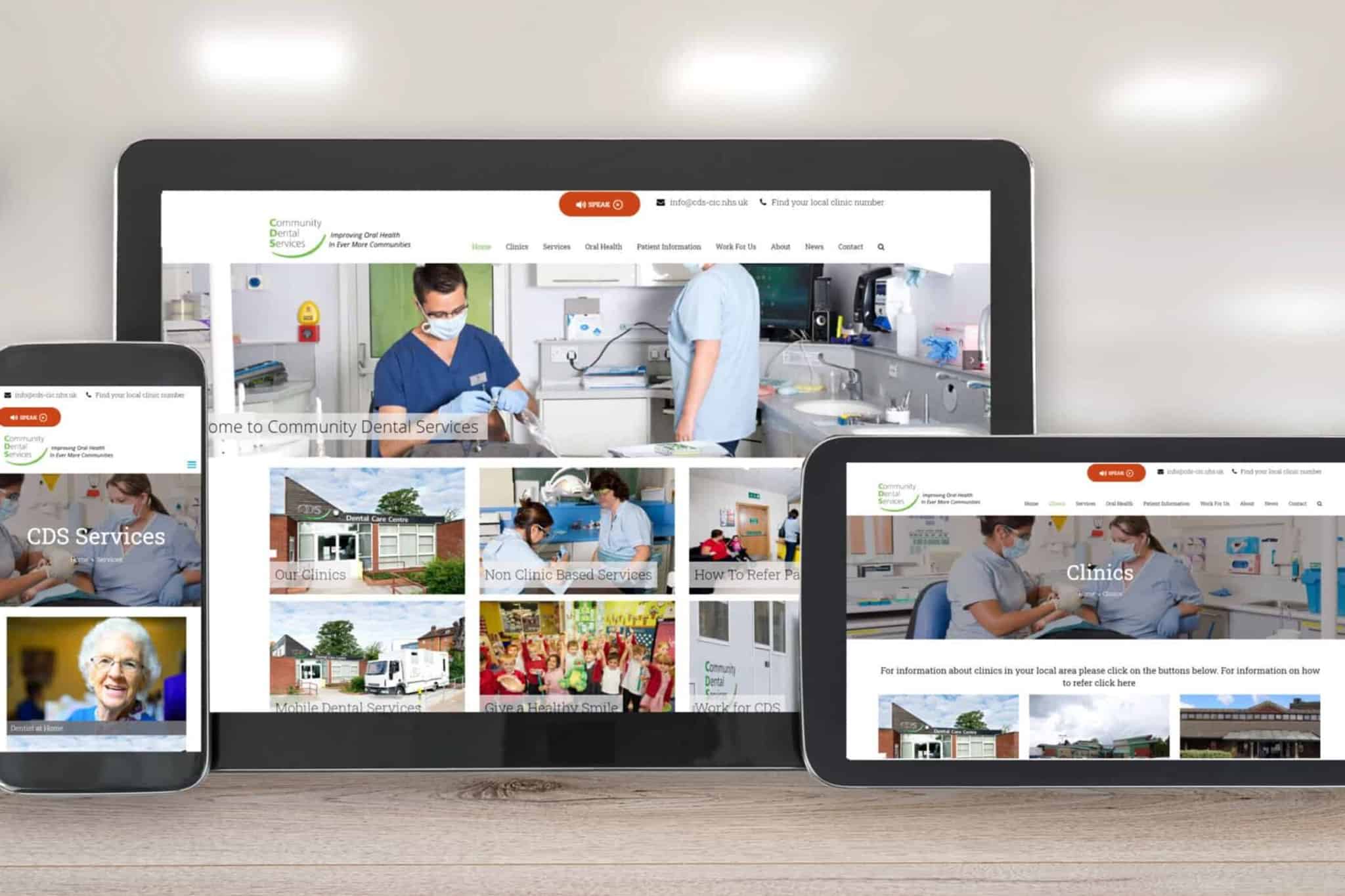Digital Marketing Strategy
What is a Digital Marketing Strategy?
A marketing strategy differs from a digital marketing strategy and it’s important to understand how, before implementing both or one within your business.
A marketing strategy is a plan for reaching a specific marketing-related goal (or goals) in a focused and achievable way. Your marketing strategy should take into consideration what your business is currently doing well at. It should also cover what you’re missing in regards to the objectives you set. This way you are more likely to accomplish it.
Marketing Strategy / Marketing Tactics
Two terms often used interchangeably are marketing strategy and marketing tactics but what’s the difference between?
Tactic vs. Strategy
As we mentioned above, a marketing strategy is a focused and achievable set of steps and actions used to help you reach a specific goal. At its basic form there are three parts to a marketing strategy, these include
- A diagnosis of your business challenges
- A guiding policy for dealing with these business challenges
- A set of targeted actions that are necessary to accomplish the policy
Your marketing strategy may include several moving parts, each with different goals, the complexity will depend upon the scale of your business. Regardless of business size, working on your marketing strategy can be and become daunting at time.
When creating your marketing strategy if you feel overwhelmed, refer back to these three steps to keep you focused on achieving your objectives.
Marketing tactics, or tactics of any kind, are the specific actions you choose to take throughout your strategy to help you reach your end goal.
So in marketing jargon free terms
- Strategy is your destination — it’s the achievable, focused plan for getting you to your target.
- Tactics are concrete and definable steps within your strategy that ensure you reach your objective.
A List Of Basic Marketing Strategies
- Search engine optimisation of your website digital content.
- A series of webinars
- Publish a blog or regular news articles
- Advertise on specific digital platforms ( Google Ads, social media platforms e.g. Facebook Ads or LinkedIn Ads).
- Create white paper / technical or free educational resources
- Produce a podcast ( daily or weekly)
- Create an email campaign (Always a great idea for B2B as typically provides a great ROI)
- The above are just for example only, always test different campaign types to determine what works best for your audience..
What is digital marketing strategy?
A digital marketing strategy helps your business achieve specific digital objectives and goals through carefully identified online digital marketing channels such as paid, earned, and owned media.
Just as with marketing strategies versus marketing tactics, “digital marketing strategy” and “digital marketing campaign” are also often interchanged. Lets consider how they differ.
Digital marketing campaigns are the building blocks and actions within your digital marketing strategy that move you toward a specific end goal.
For instance, if the overarching goal of your digital marketing strategy is to generate more leads through organic search traffic, you might run search engine optimisation campaign activities. You might create high quality, authority content to improve organic rankings.
The 6 Stages To Create A Digital Marketing Strategy
1. Build your buyer personas.
For any marketing strategy — digital or traditional — you need to know who you’re marketing to ( Who is your target customer). The best digital marketing strategies are built upon detailed buyer personas, and your first step is to create them.
For each “target” customer type
- Real quotes about goals, challenges etc
- Goals / Challenges:
- What does this person struggle with in relation to meeting goals.
- What serves as a barrier or blockage for this persons success?
- Cost savings, value, quality – what problem does your service or product solve
- Common Objections: Why wouldn’t they buy your service / product
- Identifiers: Communication preferences? Social media platforms?
- What can we do?
- to help our target customer achieve their goals
- to help our target customer overcome their challenges
- Marketing Message: how can you describe your solution to have the biggest impact on your target customer
- Bumper Sticker / Elevator Pitch: sell your target customer your solution, in a few words or sentence.
Buyer personas represent your ideal customer(s) and can be created by researching, surveying, and interviewing your business’s target audience. As a business if you are solving a number of problems / pains you may have many “target” personas
Danger, Danger – Don’t make assumptions: It’s important to note that this information should be based upon real data and insights whenever possible. Making inaccurate assumptions about your audience can cause your marketing strategy to move in the wrong direction.
To get a complete and full picture of your persona, your research base should include a mixture of existing customers, prospects ( people who have expressed an interest in the product or service). Additionally include people outside your contacts database who align with your target audience.Real
Persona Information you should gather
Lets consider the information you should you gather on your own buyer persona(s) to inform your digital marketing strategy? The information does depend if you are B2C or B2B, or whether you sell a low cost or high-cost product / service
Qualitative and Psychographic Information
- Goals: Depending on what pain / challenge your product or service solves, you may already have a good idea of the goals of your buyer persona. Clarify any assumptions by ensuring that you speak to real customers along with any internal staff who have direct contact with customers.
- Challenges / Pains: Speak to customers, sales and customer service reps, and any other customer-facing employees to get an idea of the common challenges your audience members face.
- Interests / Hobbies: Ask customers and those who align with your target audience about their hobbies and interests. If you’re a agricultural brand, for example, it’s helpful to know if large segments of your audience are also interested in sustainability and agronomy and well-being to inform future content and partnerships.
- Priorities: Talk to customers and target audience members to find out what’s most important to them in relation to your business. For example, if you’re a B2B manufacturing company, knowing your audience values technical performance over a competitive price point is very valuable information.
Quantitative and Demographic Information
- Location: Use web analytics tools such as Google Analytics to accurately identify what location your website traffic is coming from. Is the traffic coming through organic search, referrals, direct, social media or adwords and does the source of traffic perform differently
- Age: Depending on your business, this may or may not be relevant information. But if it us, it’s best to gather this data by identifying trends in your existing prospect and contact database. For example with the agricultural sector there is a growing group of younger, more technology savvy farmers coming into the market
- Job Title: Most relevant for B2B companies, this is something you can get a rough idea of from your existing customer base. Note be careful with this . A product manager at a Blue Chip company could be classified as a director within an SME.
By combining all of these details, where relevant you can start to create buyer personas that are guess free, more accurate and valuable for your business to target your marketing.
2. Identify your goals and the digital marketing tools you’ll need.
Your marketing goals should always be tied back to the fundamental goals of your business.
For example, if your business’s goal is to increase sales revenue by 10%, your marketing team’s goal might be to generate 20% more quality leads via the website than the previous year to help towards achieving the goal.
It is important to create a high-level marketing plan to outline your annual marketing strategy, identify top priorities, and more. If you are struggling to get your “marketing and business plan” sorted click the link, this process has helped many businesses create a strategic action plan.
Whatever your overarching digital marketing goal is, you must be able to measure the success of your strategy along the way with the right digital and traditional marketing tools.
3. Audit and evaluate your existing digital assets and channels.
It’s helpful to first consider the big picture, when reviewing your existing digital marketing channels and assets to determine what to incorporate in your strategy. By looking at the big picture first will hopefully prevent you from feeling confused or overwhelmed.
Gather what you information and data have, and categorize each marketing approach, campaign or activity in a spreadsheet. Document it so you have a clear picture of your existing owned, earned, reciprocal and paid media.
A framework for categorising digital marketing assets
Create an owned, earned, and paid media framework to sort and filter the digital “vehicles”, assets, or channels you’re already using and decide what’s a good fit for your strategy.
This is incredibly useful. Identifying that you are spending time running social media campaigns that don’t generate results, but you have news articles that are engaging allows you to choose and focus on the correct digital activities.
Owned Digital Media – the most important element as its the things you control
This refers to the digital assets your business or brand owns. Owned channels are the channels your business has complete control over what is shown. Typical examples include
- Your website – not just the actual website but also the domain. I often think with fond admiration of the person at B&Q who suggested the domain www.diy.com . Genius. I wonder how much the domain is worth?
- Blog / News / Content – have you written created, high quality, autorotative case studies, white papers, infographics that are getting found and being read. You may have some off-site content that you own and have created own that isn’t hosted on your website (e.g. a blog you publish on a third party or associate site).
- Imagery / Digital Photographs – do you have digital imagery that is appearing on the web
- Social media profiles – LinkedIn, Facebook, Instagram, Twitter, Pinterest TikTok etc by the time I have finished writing this article there will probably be a couple more
Earned Digital Media
Earned digital media refers to the exposure you earn through word-of-mouth marketing. Whether that’s PR work you have completed, content (guest posts, infographics, white papers) you’ve distributed on other websites.
It could simply be through the delivery of the product / service you have provided and the customer experience you’ve delivered. Earned media is the recognition you receive as a result of these efforts.
You can earn media by getting press mentions and positive reviews as well as by people sharing your content via their networks (e.g. social media channels).
Paid Digital Media
Paid media refers to any mechanism or channel you spend money on to catch the attention of your buyer personas.
The common approach that most of us are used to is Google AdWords. This is where, when you search Google, often the first results shown are those that businesses have paid to appear ( think of it as targeted display advertising – I search for conveyors and an advert for conveyors appears above the organic search)
Other forms paid digital media include paid social media posts, native advertising (e.g. sponsored posts on other websites), or any other medium through which you pay in order to gain increased visibility. Note as with all advertising, just because you are being seen by more people, doesn’t mean that you are being seen by the right kind of people.
Getting more from your digital assets – an example
- You have an owned piece of content on a landing page on your website that’s been created to help you generate leads.
- You know you want to incorporate different parts of the framework rather than just working with owned, earned, or paid media alone.
- To increase the lead generation, you make an effort to ensure it’s shareable so your audience can distribute it via their social media profiles.
- As a result of the content being sharable, this will increase traffic to your landing page. This becomes an earned media component.
- To support your content’s success, you might post about the content on your LinkedIn page and boost its coverage by paying to have it seen by more people in your target audience.
Although, it’s not necessary for success, this is how the three parts of the framework are able to work together.
Important – if your owned and earned media are already both successful, you might not need to invest in paid.
That is why it is so important to evaluate the best digital marketing strategy solutions to help you meet your goal, and then incorporate the channels that work best for your business into your digital marketing strategy.
This now allows us to work out what digital marketing we should do more of and what should be reduced.
4. Audit and plan your owned media campaigns.
Owned media is at the heart of digital marketing and almost always comes in the form of content.
The reason for this is that every message your business broadcasts can be classified as content. Whether it’s an About Us site page, Product or Service descriptions, News posts, Case Studies, Podcasts, Infographics, or posts to social media.
High quality, unique, authoritative content helps convert your website visitors into leads and customers, while improving your business’s online presence. Importantly as part of a second stage, when this content is Search Engine Optimized (SEO), it can boost your organic traffic and search rankings.
Whatever the goal of your digital marketing strategy is, you will need to incorporate owned content. Therefore decide what content will help you reach your goals to start with.
To work out what owned content you need to meet your digital marketing strategy goals, here’s a brief process you can follow .
#4.1: Audit your existing content.
- Make a list of your existing owned content, and rank each item according to what has previously performed best in relation to your current goals. We would suggest capturing this data in a spreadsheet. There are some online tools available that allow you to evaluate owned content. These will be covered in a separate article
- If your goal is lead generation, rank your content according to which content articles / pieces generated the most leads over the last year (such as a blog post, ebook, or site page).
- By working with clients and analysing content and keywords we are able to help them produce the right content for the right place, click here to rank better
- The idea here is to figure out what’s currently working, and what’s not, so that you can set yourself up for success when planning future content.
#4.2: Identify existing content gaps .
- Based on your buyer personas ( the work you previously completed), identify any gaps in the content you have.
- For example, if you’re a stainless steel fabrication company and know through research that a major challenge for your personas is finding ways to clean and maintain the stainless steel fabrication. If you don’t currently have content that covers that subject matter create some.
- By reviewing at your content audit, you might discover that “white papers” featured on a certain type of landing page convert really well (better than videos, for example).
#4.3: Create a content creation plan.
Based on the gaps you’ve identified and your findings, make a content creation plan outlining the content that’s necessary to achieve your digital marketing and business goals.
The following should be included and be part of the plan:
- Title – what’s the subject
- Format – which platform
- Goal – what do you want to achieve
- Promotional channels – how will it be promoted
- Why you’re creating the content – the rationale ( how it joins up with other activities)
- Priority level of the content – super urgent or nice to have
You could log this data in a simple spreadsheet, and include budget information if you’re planning to outsource the content creation, or a time estimate if you’re producing it yourself.
5. Audit and plan your earned media campaigns.
- Get an idea of where to focus your time by evaluating your previous earned media against your current goals
- Rank each earned media source from most effective to least effective and look at where your traffic and leads are coming from (which is the primary goal of most businesses we work with)
- You may find a particular industry article you created drove a lot of qualified traffic to your website, which boosted conversions. You might identify that LinkedIn is responsible for content that is shared the most that leads to increased traffic.
The idea is to establish what types of earned media will help you reach your goals (and what won’t) based on historical data. As with all marketing though, if there’s something new you want to experiment with, don’t rule it out just because it’s never been done before. Please make sure you measure what ever marketing you complete so you can analyse its performance
6. Audit and plan your paid digital media campaigns.
Evaluate your existing paid digital media across the platforms you use (e.g. Google Ads, Facebook Ads, LinkedIn, etc.) to figure out what’s most likely to help you meet your current goals.
If you have spent a lot of money on Google Ads or Facebook Ads and haven’t generated the results you wanted / expected, it could be time to refine your approach, or scrap it altogether. Establish if its time to focus on other platforms that are yielding better results.
On completing the process, you should have a clear idea of the paid media platforms (if any) you want to continue using, and those which you need to remove from your strategy.
7. Consolidating your digital marketing campaigns.
By this stage you have completed the research and planning, and you now have a robust opinion of the elements that will make up your digital marketing strategy.
In Summary – you will have established
- Clear profile(s) of your buyer persona(s)
- One or more digital marketing-specific goals
- An inventory of your existing owned, earned, and paid media
- An audit of your existing owned, earned, and paid media
- An owned content creation plan or wish list
Now it’s time to bring all of this together to form a cohesive marketing strategy document. Your strategy document should map out the series of actions you’re going to take to achieve your goals, based on your research up to this point.
Digital Marketing Strategy for SMEs
A well-structured digital marketing strategy is essential for small and medium-sized enterprises (SMEs) aiming to enhance their online presence and attract more customers. Digital marketing encompasses various online activities designed to promote products or services. For SMEs, understanding and implementing a digital marketing strategy can seem daunting, but it is crucial for staying competitive.
The Importance of Digital Marketing
Digital marketing allows SMEs to reach a broader audience more cost-effectively compared to traditional marketing methods. With a significant portion of consumers turning to the internet to research products and services, having an online presence is no longer optional but necessary. A well-thought-out digital marketing strategy helps businesses engage with their target audience, build brand awareness, and drive sales. It also provides valuable insights through data analytics, enabling businesses to refine their strategies continuously.
Key Components of a Digital Marketing Strategy
For an SME, a successful digital marketing strategy should include several key components. Firstly, Search Engine Optimisation (SEO) is crucial for improving visibility on search engines like Google. By optimising website content and using relevant keywords, businesses can attract organic traffic. Secondly, Content Marketing involves creating valuable content, such as blogs, videos, and social media posts, to engage and inform the audience. High-quality content helps establish authority and trust with potential customers.
Another essential component is Social Media Marketing. Platforms like Facebook, Instagram, and LinkedIn offer opportunities for businesses to connect with their audience, promote their products, and build a community. Email Marketing remains an effective tool for nurturing relationships with customers by sending personalised messages and offers. Additionally, Pay-Per-Click (PPC) Advertising allows businesses to target specific demographics and gain immediate visibility through paid ads.
Leveraging Data and Analytics
One of the significant advantages of digital marketing is the ability to track and analyse performance. Tools like Google Analytics provide detailed insights into website traffic, user behaviour, and conversion rates. For SMEs, leveraging this data is crucial for making informed decisions and optimising marketing efforts. By understanding which strategies are working and which are not, businesses can allocate resources more effectively and improve their return on investment.
Building a Digital Marketing Plan
Creating a digital marketing plan involves setting clear goals, identifying the target audience, and selecting the appropriate channels to reach them. For an SME, it’s essential to start small, focusing on a few key areas and gradually expanding as the business grows. Consistency is key; regular updates to the website, active social media engagement, and continuous monitoring of performance metrics are necessary to maintain and improve the strategy.
A robust digital marketing strategy is indispensable for SMEs looking to thrive in a competitive market. By understanding and implementing the fundamental components of digital marketing, businesses can effectively reach and engage their audience, drive sales, and build a strong online presence. Although it requires time and effort, the benefits of a well-executed digital marketing strategy far outweigh the challenges, making it a vital investment for the future growth of any SME.

FREE Website Performance Check
- Speed plays an important part in website performance how well does yours perform on desktop and mobile?
- Is your site mobile responsive if not how many customers are you losing?
- Is your site HTTPS?
- With GDPR in place is your site legally compliant?
- Find out about loads more website performance issues















